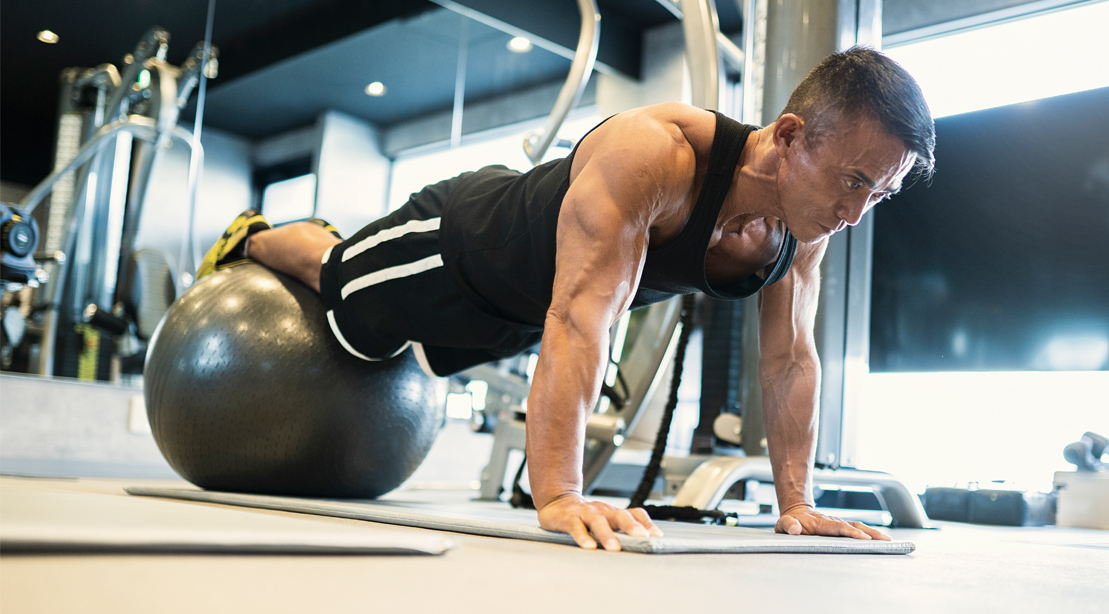The stability ball exercises gets a bad rap. Gym bros look at it and ponder how many gains can be had with what looks like a beach ball. Some women look at it and think, “I can do abs on that.” Many fitness professionals don’t like it, and some have even attacked it with a screwdriver (true story).
There’s a lot of love or hate for the stability ball, but when programmed and used sensibly, the stability ball is a tool you need in your toolbox. The stability ball will help you get stronger and more resilient against injury, and you’ll have a ball. Sorry, not sorry.
Here we’ll dive into three benefits of training with a stability ball with three exercises you didn’t know you could do with a ball.
Benefits of Stability Ball Exercises
People turn a blind eye to the stability ball because they see it as a useless tool except for abs. But it does have a few essential benefits besides doing endless crunches.
- Better Balance: When you sit on a stability ball, you’ll feel your core in a hurry, so imagine what happens when you exercise with it. The most significant advantage of these exercises is that your body engages more muscle to stay balanced.
- Increased Intensity Without Weight: The stability ball improves your ability to recruit more muscle without an increase in load. This is because of the greater involvement of your body’s stabilizer muscles to stop your face from meeting the floor.
- Reduced Injury Risk: Stability ball exercises, like pushups and ab crunches, increase the activation of core stabilizers which helps provide more excellent resistance to injury.
How to Choose the Correct Stability Ball Size For You
Before getting into the three stability ball exercises below, size matters but doesn’t it always? Stability balls come in three industry-standard sizes: 55 cm, 65 cm, and 75 cm. These sizes indicate the height and diameter of the stability ball when properly inflated.
There is an easy test to determine which size stability ball you should use for most exercises performed on it. Sit on it—that’s right, sit on it. If more or less your thighs are parallel to the ground, that’s the ball for you. If your hips are above or below your knees, it’s either too big or too small.
When performing stability ball planks, push-ups, rollouts, etc., the smaller ball will generally have you closer to the ground to make the exercise more difficult and the taller ball slightly easier. But this depends on personal preference and the length of your arms. Quickly experiment to see which size ball is right for you regardless of the test above.
Top 3 Stability Ball Exercises
If you think the stability ball is for weaklings, think again. Here are three stability ball exercises that challenge you in ways you never thought possible.
